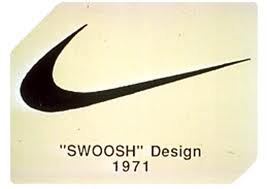HOW TO MAKE THE RIGHT CHOICES
MORE OFTEN
You’re responsible for
your decisions. It’s a significant part of why you’re paid for doing your job
or are highly respected in your community at large.
The more responsibility you take on, and the more right
decisions you make, the more you’re worth to any enterprise you’re actively
involved in.
So, by now, an effective decision-making process has probably
become second nature for you.
But how about the decision-making skills of the less-experienced
folks around you?
In both the work-a-day world and in the bigger framework of
life aren’t there promising individuals you would like to see learn and earn
more responsibility and move up their ladders of success?
TGIM CHALLENGE: Step up and mentor them. Show them how to build
their skills and make the right decisions more easily and more often.
It’s a fact: One
reason “subordinates” can be reluctant to tackle a decision-making challenge is
that they haven’t learned the often-invisible “best practice” techniques that
you automatically apply.
Think about it:
Making difficult choices is not something that necessarily comes up in the
everyday routine. And when the need for quick and informed decision-making does
arise, and others turn to you for your valued input, often there’s not the
opportunity to patiently dissect and explain the process on the go.
So, if there’s a bit of a Dog Days of August slowdown in
your circle of influence, maybe now is a good time to help others build skills.
As you reflect on your choice-weighing process and prepare
to guide your future better decision makers -- and in doing so make them less
reluctant and actually more helpful to you in your quest to progress – consider
sharing these --
TGIM ACTION IDEAS: They’re four broadly described but proven-on-the-job
strategies that improve the odds of making the right decision more often.
See how they align with your personal practices for sorting
out which path to chose. Then, assuming they’re compatible with your way of
getting to the right decision, mix in your own personal examples to make the correct
course of action crystal clear.
Tell your future great decision makers:
#1: Use past errors. Treat
past setbacks as the valuable learning experiences they are. Recall what led up
to a faulty decision. Look for a pattern in the way you evaluate these
situations. This way you’ll size things up better and learn how to prevent
similar foul-ups in the future.
#2: Approach as an
outsider. No doubt there are certain routine job duties you can do with
your eyes closed. When it comes to decision making in an area where your
comfort level is less, it pays to look at the situation without preconceived
notions.
How to do it: For
the moment, forget everything you know. View the problem as a detached
observer, not as a business insider. What conclusions would you draw from the
facts alone – without knowing the setup of the deal or the organization or the
personalities involved? Decide on this basis and you’ll have a better chance of
accurately judging what you’re up against.
#3: Get others
involved. Others may see the challenge in a different light. To be sure
you’re being objective ask them how they would handle things. Assuming it’s
not a breach of confidentiality, ask the opinion of coworkers you respect. Ask family
members or friends outside the circle of those with first-hand involvement.
What do they know?
It may not matter. Even if it seems too “industry specific” or “inside
baseball” for the uninitiated to understand, try it anyway. Trying to simplify
your explanation for them may simplify your view and analysis of the problem.
#4: Trust your
instincts. When all is said and done, go with your gut feeling about
different choices that seem to have equal validity. As they used to say about
multiple choice tests, when you’re not
sure of the correct answer and when the penalty for a wrong answers is equal to
no answer, your informed first choice has the best chance of being right.
Finally: Still
feeling reluctant?
Don’t! You’re
getting to be the decision maker because someone believed that you were best
qualified to make the call. So make it!
***
Good luck with your
mentoring.
Hope you’re glad you
chose to read this far. I appreciate it and I’m deciding to call this TGIM
complete -- for now.
Geoff Steck
Chief Catalyst
Alexander Publishing & Marketing
Chief Catalyst
Alexander Publishing & Marketing
8 Depot Square
Englewood, NJ 07631
201-569-5373
tgimguy@gmail.com
201-569-5373
tgimguy@gmail.com



